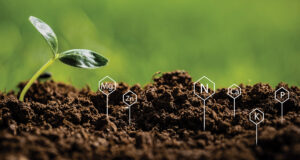Idyllic is the tomato harvest of perfectly round fruits shining in a glow of flawless red. But in the real world of vegetable gardening, such a crop is not always the case because many tomatoes will be scarred, marred and otherwise look down right ugly.
Why?
Disease! It must be a disease! So out comes the sprayer, and you spray and spray with a fungicide. But it doesn’t work.
Insects! The dastardly disfiguring must be the work of insects! So out comes the sprayer again, and you spray and spray with an insecticide. But it doesn’t work either.
What caused your once-promising tomato crop to look so terrible? Rather than diseases or insects always being the usual suspects, there are several physiological problems that can also produce less-than-pristine fruits, and knowing what they are now will help prevent them at harvest time. Listed below are four of the most common disorders and tips on how to deal with these problems. For a tomato patch closer to perfection this summer, study them carefully.
Blossom End Rot. This ugly dark brownish blotch on the bottom of an otherwise flawless fruit stems from stress put upon the plant due to finicky Mother Nature — in particular, wildly fluctuating rainfalls creating extended periods of wet-dry-wet-dry conditions. A 3- to 4-inch mulch and regular watering when the rains don’t come will help stabilize the ground moisture supply and prevent such ugliness from occurring. In addition, a shot of calcium will also inhibit this problem, especially in gardens with acidic soil. Powdered lime is a good source of calcium, but it reacts slowly with the soil. For quicker results, spray tomato leaves with a diluted solution of calcium chloride (available at most lawn and garden centers).
Sunscald. It first appears as a yellowish, discolored spot on top of a tomato, and then eventually turns the afflicted area about as ugly as a bad case of blossom end rot. True to its name, the cause of this blemish is Ol’ Sol — too much sun is the culprit. Sunscald usually happens on tomatoes that ripen on the upper branches of plants. With less shade, these fruits easily become overexposed to relentless sun rays. However, conservative pruning (especially in the top branches) and using a light covering such as cheese cloth over the plants will help prevent the sun from doing such damage to ripening ‘maters.
Cracking. This condition is marked by concentric, unappetizing rings circling the stem or vertical splits along the sides of the fruits. It is the result of tomatoes growing too fast and literally bursting out of their skins. This problem usually occurs when a big rain falls after a long dry spell. Too much water too soon becomes too much of a good thing, and it causes the tomatoes to crack. Mulching the plants will help steady the moisture supply, and a regular watering schedule when the rains don’t come will also prevent this disorder. In addition, if this seems to be a persistent problem in your garden, there are varieties available that are resistant to cracking.
Catfacing. Have any disfigured or deeply scarred tomatoes? They are probably the victims of catfacing. Don’t take the name too literally and think rogue cats are the cause. No, “catfacing” is just a descriptive term used to describe this disorder. With a lot of imagination, you can sometimes see cat faces formed by the disfigurements. This problem starts early in the development of fruit. Cool weather can cause abnormal growth in young tomatoes that magnifies as they get bigger, meaning early spring plantings are usually more susceptible to catfacing. So, if your first crop of tomatoes show signs of this problem, don’t worry — any fruit that follow should be free of this disorder as temperatures rise during the growing season.
L.A. Jackson has been a garden editor, lecturer and writer for over 20 years and has led many tours overseas through the great gardens of Europe. He lives in North Carolina.










